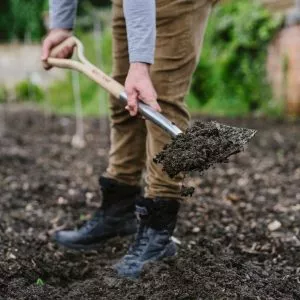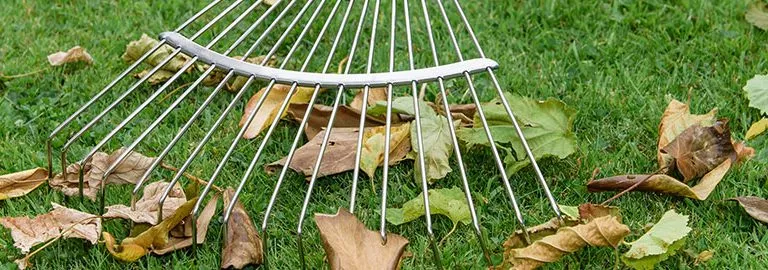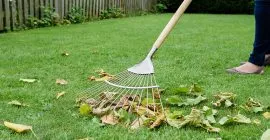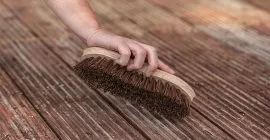Autumn brings beauty to the garden as the leaves of shrubs and trees change colour. But as the leaves fall and collect on the lawn and around the garden, they can cause problems. This is why raking lawn leaves and other debris can do a world of good.
Why leaves on lawns are a problem?
The carpet of fallen leaves can create a blanket that blocks out light and air, this can kill off healthy grass leaving the lawn bare and patchy. Looking on the bright side, collecting leaves means getting out in the fresh air and doing some exercise while tidying the garden, as well as giving you lawn it’s best chance of success.
Raking lawn leaves and other methods



There are a few different ways to collect leaves. The most common is to use a lawn rake like the Kent & Stowe 3 in 1 Leaf Rake. This rake is great as it has a super wide head for clearing large areas, as well as detachable heads which turn into leaf grabbers. You can pick up all the leaves you have collected and add them to your compost heap or brown bin. You can also detach one side of the rake and use one side for clearing around tighter spots. A good tip is to rake in the direction the wind is blowing to keep leaves moving together.
A leaf and grass scoop can also be helpful to pick up piles of leaves or a garden tidy sheet.
Leaves can quickly blow away and out of wheelbarrows so it can be a good idea to collect in bags. Reusing old compost bags are perfect for this job.
For those with big gardens and many trees, an electric leaf blower can be used to gather and suck up leaves. Another way to convenient way to collect leaves is by using a rotary mower. This shreds the leaves and combines with grass clippings, which aids the rotting down process if you decide to make leaf mould.
Using raked leaves to make leaf mould
Once you have collected leaves you can add them to your compost heap or use them to create leaf mould, a valuable and highly nutritious soil conditioner.
- Take an old compost bag or black bin bag and pierce with a garden fork or knife
- Then add moistened leaves and seal the bag.
- Leave for 1-2 years for the leaves to decompose.
- The leaves can be shredded or chopped to accelerate the decomposition period.
- When the leaves have rotted down the resulting material can be sieved to create a nutritious soil conditioner/mulch to use around the garden.





